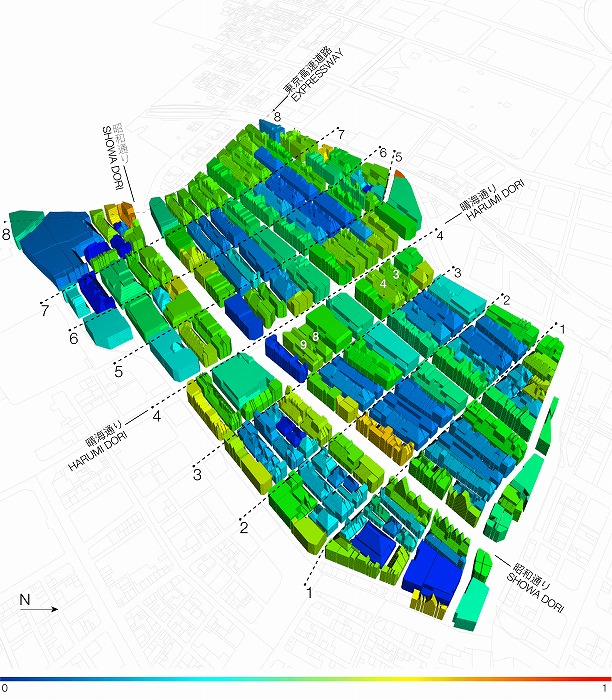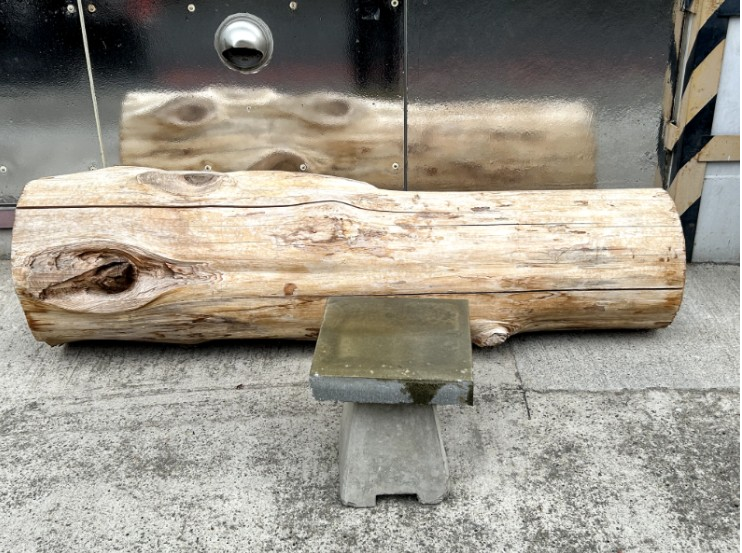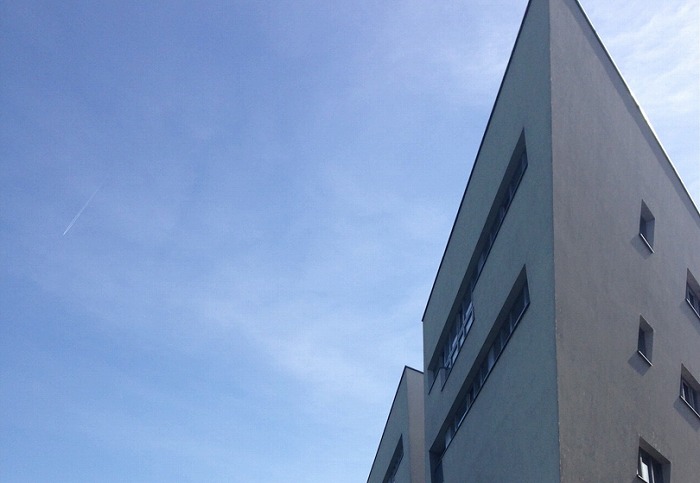![]()
最善の可能都市へ
2024.04.30
パラメトリック・ボイス
東京大学 ソライロ・エルメ
私たちは今面白い時代に生きています。
特に技術の分野では、毎日新たな可能性が開かれつつあります。
AI(人工知能)とAR(拡張現実)は、単なる言葉の流行りから一歩踏み込んで、私たちの生
活の一部となりつつあります。
あり得る未来の中で、AIは知識の障壁を打ち破り、知識をすべての人に提供する能力です。
これにより、人々が力を得て創造する可能性がますます高まります。
ARは、没入型のインターフェースであり、その距離に関係なく、重なり合っていたり、代替
されている世界をさらに深く、広く、直感的に共有し、探索することが可能になります。
特に興味深いのは、これらの2つの技術の組み合わせが、現実世界、すなわち私たち全員が共
有する唯一のアナログ世界、で生活し、空間を利用する方法を向上させることです。
複雑で分かりにくい知識が多くの人々に直接的な影響を与える場合、その知識を共有すること
は特に重要です。例えば、都市計画・建築と関わる法規の場合です。
これらの規制は、数が多い上に、法律、所有権、統計、幾何学、3D空間など多岐に亘るためそ
の範囲が広く、理解するのが特に難しいものです。それでも、これらはすべての人々に影響を
与えます。
住むための住居、仕事をするための事務所、買い物ができるお店。都市計画・建築と関わる法
規は私たちが何を、どこで行うことができるかを決定し、最終的に目の前に建てることができ
るものを定めています。これらは法律の中にあり、公にされていますが、曖昧です。
AIを使用すると、既存の規制の適用を自動化することができます(画像1)。

画像1 AI(法律エキスパートシステム)により、東京銀座の敷地に適用された都市計画法・
建築基準法の規定の可視化。敷地ごとの最大容積をシミュレーションし、道路高さ
規制の緩和の可能性に応じて色分けする(筆者の博士論文の一部)
AR技術を使用すると、自分の土地に適用される規制を見ることができます。
自分の所有地に建てられる最大体積を直ちに見ることができ、シミュレーションされた各壁に
直接触れて、それを定める規制と、その施行を担当する公共機関がわかります(画像2)。

画像2 ユーザーは規定に"タッチ"し、インタラクティブに説明を受けることができる。
ARインターフェースのコンセプト(実装については現在着手中)
これにより、誰もが各規則を確認し、不明な場合は質問をし、自分の提案も行うことができま
す。
更には、これらの提案に基づいて規制・都市計画が更新されることが可能になります。
この未来では、AIとARの力を得て、人々がますます自分の空間を作成することができ、それ
と同時に全体的なバランスを確保する透明な規制システムを理解し、それに貢献することがで
き、より複雑に多様で効率的な都市空間を促進するのは興味深いです。最善の可能都市へ。
これは面白い時代です。技術はますます強力になっています。私たちがどのような未来を力付
けるかは私たち次第です。
以下、上記のコラムを英文でも掲載します。
THE BEST OF ALL POSSIBLE CITIES
The University of Tokyo Hermenegildo Solheiro
We live interesting times, technology opens up new possibilities by the day. Concepts
such as Artificial Intelligence (AI) and Augmented Reality (AR), have become more
than buzzwords, step by step entering our daily lives.
Within all the possible futures, it is fascinating AI’s ability to break down barriers and
to make knowledge available to all, an extraordinary potential for empowering people
and allowing them to create.
AR, this immersive interface that adds new dimensions to accessibility, makes it
possible to share and explore distant, alternative and overlapping worlds, ever more
deeply, extensively and intuitively.
But it is especially interesting the way these two technologies can combine to improve
the way we live and use space in the real world, this analogic world that’s unique
because it’s the only we all share.
Unlocking the access to knowledge is especially relevant when matters of high
complexity directly affect many people. Making such matters understandable is crucial
to enable constructive input from all interested parties. This is the case of regulations
that affect city making and space creation, aka urban and architectural laws and
regulations.
These regulations are many in number, vast in scope and cover simultaneously law,
property, statistics, geometry, 3D space.. which makes them especially challenging to
grasp.Yet they affect everyone. What we can do and where, they ultimately define
every built shape we see.
May it be a house for living, an office space, a walk in the park, spaces and their
activities are to a great degree legally stipulated. It’s all there in the law, it’s public,
it’s official, yet obscure.
Using AI we can streamline the connection between the network of existing
regulations and their real world effects. Making the inference of regulation application
automatic (Image 1).

Image 1 - AI (legal expert system) inferring the regulatory limits applied to parcels in
Ginza, based on the City Planning Act and Building Standards Act enforced by
the Tokyo City Plan. 3D simulation of maximum volumes per parcel, colored
according to the possible relaxation of the road height restriction. Developed
as part of the author's PhD thesis.
With AR technologies we can make regulations visible, for example, as they apply to
our own plot of land.
We can immediately see the maximum envelope that can be built in our property
along with the possible uses, and interactively touch each predicted plane to know
which regulation is defining it, which public body is responsible for its enforcement
(Image 2).

Image 2 - The user can ‘touch’ the regulations and reach the administration to have an
interactive explanation. Interface concept. Under development.
This allows everyone to check each rule, and if it’s unclear to pose a
question, give their own suggestion, and these suggestions can become the basis for
future regulatory updates.
I am interested in how AI and AR can, in this way, remove procedural noise and
empower people to create their own spaces hands-on, while simultaneously making it
possible to understand and contribute to a transparent regulatory system that ensures
overall balance and allows complexity and efficiency to flourish in urban spaces. For
the best of all possible cities.
These are interesting times. Technology is ever more powerful. Now it is up to us what future we want to empower.
ソライロ・エルメ 氏 東京大学生産技術研究所 特任研究員



























